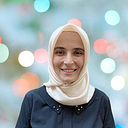Pytorch Image Segmentation Tutorial For Beginners — II
In the previous tutorial, we prepared data for training. We downloaded the dataset, loaded the images, split the data, defined model structure, downloaded weights, defined training parameters.
In the second part of the tutorial, we train the model and evaluate the results of the model. I
Prepare Training
We first define the device and switch between CPU and GPU when needed.
device = torch.device(‘cuda’) if torch.cuda.is_available() else torch.device(‘cpu’)We load the model to the device.
model.to(device)We initialize two lists to store loss values.
loss_history = []loss_history_val = []
We define best_loss_val, and make it store an infinite value. Thus, best_loss_value acts as an unbounded upper value for comparison. This is useful for finding the lowest value for the loss.
best_loss_val = float(‘inf’)Train
We start training.
print(“Start train…”)We make a for loop for every epoch.
We set the train mode.
for epoch in range(50): #Train mode model.train() loss_running = [] for _, (x,y) in enumerate(train_dataloader): x, y = x.float().to(device), y.float().to(device) pred = model(x) loss = criterion(pred, y) loss_running.append(loss.item()) optimizer.zero_grad() loss.backward() optimizer.step() loss_history.append(np.mean(loss_running))
We set the evaluation mode.
# Evaluate modemodel.eval()with torch.no_grad():loss_val_running = []for _, (x_val, y_val) in enumerate(val_dataloader):x_val, y_val = x_val.to(device), y_val.to(device)
We do predictions, calculate loss, append the calculated loss to the list of train and validation losses. (loss_running, loss_val_running)
pred_val = model.forward(x_val) #pred_val = model(x_val)loss_val= criterion(pred_val, y_val)loss_val_running.append(loss_val.item())curr_loss_val = np.mean(loss_val_running)loss_history_val.append(curr_loss_val)
We save the best weights of the model for later use.
# Save the best weightsif curr_loss_val < best_loss_val:best_loss_val = curr_loss_valtorch.save(model.state_dict(), ‘/content/drive/My Drive/Brain-Tumor-Segmentation-Project/best_model.pth’)
We change the learning rate by a learning rate scheduler we defined before.
# Change the learning ratescheduler.step()
We print the results.
# Print the resultsprint(“epoch”, epoch, “train loss”, loss_history[-1], “val loss”, loss_history_val[-1])
Here is the block of code.
We load the best model’s weights and evaluate the model.
checkpoint = torch.load('/content/drive/My Drive/Brain-Tumor-Segmentation-Project/best_model.pth', map_location=torch.device('cpu'))model.load_state_dict(checkpoint)
Let’s now see what we did.
def plot_mask(mask_3d_array, axx): # takes 64*64*64 arraymask_cpu = mask_3d_array.cpu().detach().numpy()reshaped_mask_cpu = np.reshape(mask_cpu,(512, 512))print(np.max(reshaped_mask_cpu), np.min(reshaped_mask_cpu))reshaped_mask_cpu_bin = np.round(reshaped_mask_cpu)axx.imshow(reshaped_mask_cpu_bin)
Plot some predicted and ground truth masks
dataloader = test_dataloaderncol = 4rand_ndx = random.sample(range(0, len(dataloader)), ncol)fig, ax = plt.subplots(nrows=2, ncols=ncol, figsize=(20, 10))i = 0for n, (x, y) in enumerate(dataloader):x, y = x.to(device), y.to(device)if n in rand_ndx:pred = model.forward(x)plot_mask(pred[0,0,:,:,:], ax[0][i])plot_mask(y[0,0,:,:,:], ax[1][i])i+=1
Congratulations. Here is the link to my project if you want to see more details.
Any suggestions to seymatas@gmail.com will be very appreciated!
